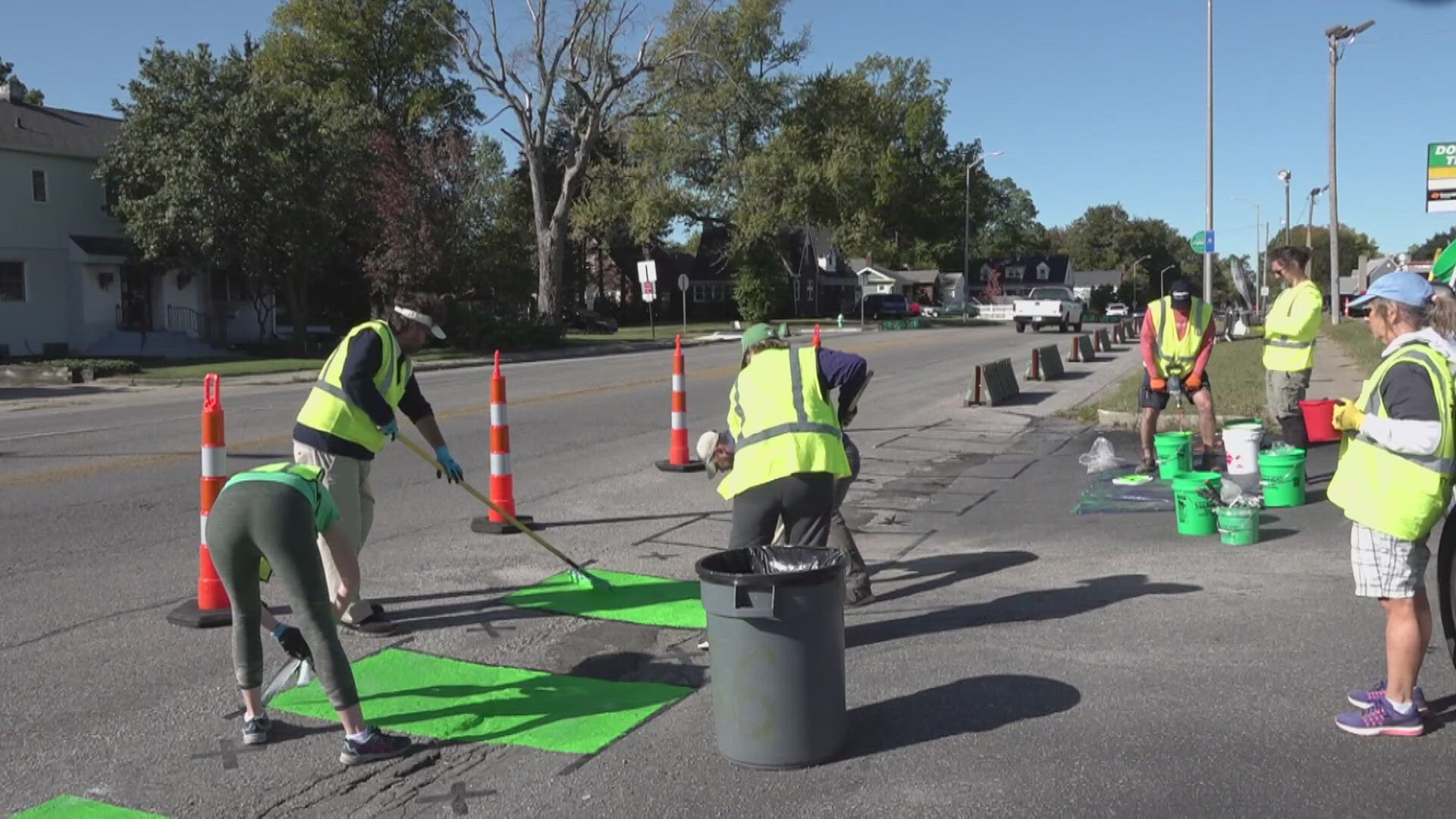INDIANAPOLIS — Indianapolis Mayor Joe Hogsett announced the next phase of his Community Powered Infrastructure Program.
In a news conference Thursday, Hogsett announced the six projects selected for funding through the 2024 Indianapolis Neighborhood Infrastructure Partnership (INIP) via the Indianapolis Department of Public Works (DPW).
“For six years now, the Indianapolis Neighborhood Infrastructure Partnership has successfully utilized input and investment directly from our communities to make improvements in neighborhood infrastructure all over Indianapolis,” Hogsett said. “And the city has supported these projects by matching our communities’ investments, dollar for dollar.”
The six projects include:
- Center for Inquiry School 70 – New sidewalks sections and pedestrian crossing
- Greenbriar Neighborhood Association – Sidewalk rehabilitation
- IndyGo Foundation – Bus stop improvements
- International District Community Center - Sidewalk improvements, road repair, median work
- Town of Meridian Hills – Road improvements
- Trustees of Indiana University (Indianapolis campus) - Resurfacing, crosswalk enhancements
The projects total to nearly $2.5 million.
The mayor also opened applications for the City’s Tactical Urbanism and Art in the Right-of-Way programs, all programs under Community Powered Infrastructure.
City officials said the program allows Indy DPW to double the value of tax dollars, increase the number of neighborhood and community-based projects and jump-start development that wouldn't have been able to be done through just capital projects.
This is the first year that Indy DPW is working to combine all three programs into “Community Powered Infrastructure.” City officials said the program allows residents to play an "active role" in the development of their community through cost-share projects.
“Community Powered Infrastructure supplements the work of our engineering team by empowering residents to help make more immediate changes they would like to see in their neighborhoods,” DPW Director Brandon Herget said. “When residents are involved, projects are more likely to reflect the true needs and desires of the community.”
A new tactical urbanism project recently popped up on College Avenue in the Mapleton-Fall Creek Neighborhood.
"We have crashes at 30th, 31st and all the way up to 38th Street. At every intersection more or less," said Keith Cruz, part of the Mapleton-Fall Creek Neighborhood Association.
Cruz and other neighbors say the issue is people cutting across or turning left on College Avenue despite signs that say it's illegal.
"We really pushed DPW pretty hard for immediate changes because we have seen crashes there forever," Cruz said.
On Monday, Indy DPW installed several bollards at 34th and 32nd streets to prevent those tricky turns as a temporary fix as they work to find a more permanent solution.
"We are super optimistic to see what changes this provides," Cruz said.
If you want to start a "Community Powered Infrastructure" project, here's what you need to do:
Identify the problem. Say you and your neighbors are tired of cracks in your sidewalk or drivers speeding down your street.
Start raising money to fix it and be ready, these projects can get pretty pricy.
Submit an application to the city explaining why you need this project.
If your application is approved, Indy DPW could split the cost of the project with you 50-50.
If the total cost is still too expensive for your neighborhood, Indy DPW plans to open a "lending library" of tools and equipment you can use to make your neighborhood safer. When you're done, you'll give them back so another community can use them.
The application window for Tactical Urbanism and Art in the Right of Way Cost-Share projects will be open through Aug. 30, 2024.

